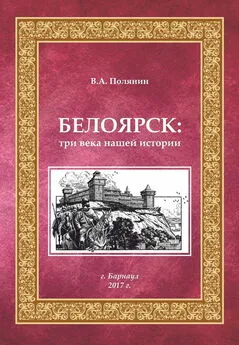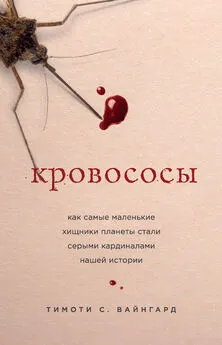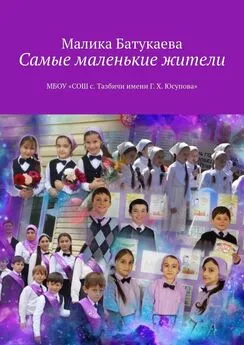Тимоти С Вайнгард - Кровососы [Как самые маленькие хищники планеты стали серыми кардиналами нашей истории] [litres]
- Название:Кровососы [Как самые маленькие хищники планеты стали серыми кардиналами нашей истории] [litres]
- Автор:
- Жанр:
- Издательство:Литагент 5 редакция «БОМБОРА»
- Год:2019
- Город:Москва
- ISBN:978-5-04-100194-0
- Рейтинг:
- Избранное:Добавить в избранное
-
Отзывы:
-
Ваша оценка:
Тимоти С Вайнгард - Кровососы [Как самые маленькие хищники планеты стали серыми кардиналами нашей истории] [litres] краткое содержание
Кровососы [Как самые маленькие хищники планеты стали серыми кардиналами нашей истории] [litres] - читать онлайн бесплатно ознакомительный отрывок
Интервал:
Закладка:
Самую подробную информацию о Чингисхане и эпохе монгольских нашествий можно найти в книгах: Peter Frankopan, The Silk Roads: A New History of the World; Frank McLynn, Genghis Khan: His Conquests, His Empire, His Legacy; Jack Weatherford, Genghis Khan and the Making of the Modern World; James Chambers, The Devil’s Horsemen: The Mongol Invasion of Europe; John Keegan, The Mask of Command: Alexander the Great, Wellington, Ulysses S. Grant, Hitler, and the Nature of Leadership; Robert B. Marks, Tigers, Rice, Silk, and Silt: Environment and Economy in Late Imperial South China; Jacques Gernet, Daily Life in China on the Eve of the Mongol Invasion, 1250–1276; Peter Jackson, The Mongols and the West, 1221–1410; Carl Fredrik Sverdrup, The Mongol Conquests: The Military Operations of Genghis Khan and Sübe’etei. Кроме того, были использованы труды Брея, Кросби, Капинеры и Уильяма Г. Макнила.
Литературы по Колумбову обмену чрезвычайно много. Основные источники (включая цитаты), такие как дневники Бартоломе де Лас Касаса, использованы в максимальном объеме. Работая над одной из своих книг «Коренные народы британских доминионов и Первая мировая война» (Indigenous Peoples of the British Dominions and the First World War), я провел немало времени в архивах Британии, Канады, Австралии, Новой Зеландии, Соединенных Штатов и Южной Африки. Собранные материалы я применил в работе и над этой книгой тоже. Наиболее полезными источниками для этих глав были книги: Alfred W. Crosby, The Columbian Exchange: Biological and Cultural Consequences of 1492 and Ecological Imperialism: The Biological Expansion of Europe, 900–1900; Charles C. Mann, 1493: Uncovering the New World Columbus Created; William H. McNeill, Plagues and Peoples; Mark Harrison, Disease and the Modern World: 1500 to the Present Day; Biological Consequences of the European Expansion, 1450–1800, ed. by Kenneth F. Kiple and Stephen V. Beck; Robert S. Desowitz, Who Gave Pinta to the Santa Maria? Torrid Diseases in the Temperate World; Tony Horwitz, A Voyage Long and Strange: On the Trail of Vikings, Conquistadors, Lost Colonists, and Other Adventurers in Early America; Noble David Cook, Born to Die: Disease and New World Conquest, 1492–1650; Daniel J. Boorstin, The Discoverers; Dorothy H. Crawford, Deadly Companions: How Microbes Shaped Our History; Jared Diamond, Guns, Germs, and Steel (отсюда я позаимствовал термин «случайные завоеватели»); Lawrence H. Keeley, War before Civilization: The Myth of the Peaceful Savage; Africa’s Development in Historical Perspective, ed. by Emmanuel Akyeampong, Robert H. Bates, Nathan Nunn, and James A. Robinson; Robert A. McGuire and Philip R. P. Coelho, Parasites, Pathogens, and Progress: Diseases and Economic Development; Peter McCandless, Slavery, Disease, and Suffering in the Southern Lowcountry; Margaret Humphreys, Yellow Fever and the South; Sheldon Watts, Epidemics and History: Disease, Power and Imperialism. Об открытии и влиянии на историю коры хинного дерева и хинина см.: Fiammetta Rocco, The Miraculous Fever-Tree: Malaria, Medicine and the Cure That Changed the World; Mark Honigsbaum, The Fever Trail: In Search of the Cure for Malaria; Rohan Deb Roy, Malarial Subjects: Empire, Medicine and Nonhumans in British India, 1820–1909. О малярии и торговле опиумом см.: Paul C. Winther, Anglo-European Science and the Rhetoric of Empire: Malaria, Opium, and British Rule in India, 1756–1895.
Основным источником для меня была книга Манна «1493», где содержится огромное количество ценной информации. Кроме того, я широко пользовался книгами Уэбба, Паккарда, Кипла и Бека, Спилмена и Петриелло. Они очень хорошо и подробно описали распространение малярии в Европе и Англии, а также ее появление и шествие в Америке. Очень полезна для меня была книга Virginia DeJohn Anderson, Creatures of Empire: How Domestic Animals Transformed Early America. О планах шотландцев обосноваться в Дарьене писали Шах и Манн. Кроме того, я использовал книгу J. R. McNeill, Mosquito Empires: Ecology and War in the Greater Caribbean, 1620–1914. Концепция трех зон инфекции и линии Мейсона – Диксона освещена в книгах Уэбба, Дж. Р. Макнила и Манна.
Наибольший интерес представляют книги: Fred Anderson, Crucible of War: The Seven Years’ War and the Fate of Empire in British North America, 1754–1766; Alvin Rabushka, Taxation in Colonial America; Erica Charters, Disease, War, and the Imperial State; Robert S. Allen, His Majesty’s Indian Allies: British Indian Policy in the Defence of Canada, 1774–1815; William M. Fowler, Empires at War: The Seven Years’ War and the Struggle for North America, 1754–1763; Richard Middleton, Pontiac’s War: Its Causes, Course and Consequences; David R. Petriello, Bacteria and Bayonets: The Impact of Disease in American Military History. Книга Дэвида Р. Петриелло была исключительно полезна для работы над рядом глав этой книги. Дж. Р. Макнил отлично показал роль комаров в колониальных войнах, в том числе в катастрофе, произошедшей с французами в Куру и на острове Дьявола и приведшей к восстаниям в Америке и американской революции.
Самые полезные, глубокие и тщательно проработанные труды по роли комаров в исходе американской революции (и других восстаний против колониального владычества в Америке) – это J. R. McNeill, Mosquito Empires и Peter McCandless, Slavery, Disease, and Suffering in the Southern Lowcountry. Я использовал также журнальную статью Peter McCandless, «Revolutionary Fever: Disease and War in the Lower South, 1776–1783». При рассказе о роли комаров в формировании американской государственности использованы труды Шермана, Манна, Шах и Петриелло. О революциях (и вспышках желтой лихорадки) в Америке, в том числе о восстании Туссен-Лувертюра на Гаити и Симона Боливара в испанских колониях, подробно писали Дж. Р. Макнил, Манн, Шерман, Клифф и Смоллмен-Рейнор и Уоттс. Были использованы книги: Billy G. Smith, Ship of Death: A Voyage That Changed the Atlantic World; Jim Murphy, An American Plague: The True and Terrifying Story of the Yellow Fever Epidemic of 1793; J. H. Powell, Bring Out Your Dead: The Great Plague of Yellow Fever in Philadelphia in 1793; Rebecca Earle, «A Grave for Europeans»? Disease, Death, and the Spanish-American Revolutions».
О войне 1812 года см.: Alan Taylor, The Civil War of 1812: American Citizens, British Subjects, Irish Rebels, and Indian Allies; Walter R. Borneman, 1812: The War That Forged a Nation; Donald R. Hickey, The War of 1812: A Forgotten Conflict. О роли комаров в американо-мексиканской войне и жизни американского Запада писали Дж. Р. Макнил и Дэвид Петриелло. Кроме того, была использована книга Amy S. Greenberg, A Wicked War: Polk, Clay, Lincoln, and the 1846 U. S. Invasion of Mexico. Блестящий рассказ о взаимосвязи комаров, малярии, запасов хинина и их роли для принятия закона об освобождении рабов и победы Союза – книга Andrew McIlwaine Bell, Mosquito Soldiers: Malaria, Yellow Fever, and the Course of the American Civil War. О гражданской войне см.: Margaret Humphreys, Marrow of Tragedy: The Health Crisis of the American Civil War и Intensely Human: The Health of the Black Soldier in the American Civil War; Kathryn Shively Meier, Nature’s Civil War: Common Soldiers and the Environment in 1862 Virginia; Jim Downs, Sick from Freedom: African-American Illness and Suffering during the Civil War and Reconstruction; Mark S. Schantz, Awaiting the Heavenly Country: The Civil War and America’s Culture of Death; Frank R. Freemon, Gangrene and Glory: Medical Care during the American Civil War; Paul E. Steiner, Disease in the Civil War: Natural Biological Warfare in 1861–1865; John Keegan, The American Civil War. О генерале Гранте, президенте Линкольне, основных проблемах и целях гражданской войны, в том числе о принятии закона об освобождении рабов, рассказывается в прекрасной биографии: Ron Chernow, Grant. Кроме того, были использованы книги Манна, Макгуайра, Коэльо, Петриелло, Марка Харрисона, а также Клиффа и Смоллмен-Рейнора.
О распространении болезней, переносимых комарами в США в период реконструкции после Гражданской войны, в том числе об эпидемиях желтой лихорадки 70-х годов XIX века, рассказывается у Уэбба и Паккарда, а также в книгах: Molly Caldwell Crosby, The American Plague: The Untold Story of Yellow Fever, the Epidemic That Shaped Our History; Jeanette Keith, Fever Season: The Story of a Terrifying Epidemic and the People Who Saved a City; Khaled J. Bloom, The Mississippi Valley’s Great Yellow Fever Epidemic of 1878; Stephen H. Gehlbach, American Plagues: Lessons from Our Battles with Disease. Об открытиях и программах истребления комаров Мэнсона, Лаверана, Росса, Грасси, Финли, Рида, Горгаса и других повествуется во множестве книг, в том числе и в их собственных публикациях. Основные источники: Gordon Harrison, Mosquitoes, Malaria and Man: A History of the Hostilities Since 1880; Greer Williams, The Plague Killers; James R. Busvine, Disease Transmission by Insects: Its Discovery and 90 Years of Effort to Prevent it; Gordon Patterson, The Mosquito Crusades: A History of the American Anti-Mosquito Movement from the Reed Commission to the First Earth Day; James E. McWilliams, American Pests: The Losing War on Insects from Colonial Times to DDT; Nancy Leys Stepan, Eradication: Ridding the World of Diseases Forever? О влиянии болезней, переносимых комарами, на Кубу и Филиппины во время американо-испанской войны, а также на строительство Панамского канала см.: Ken de Bevoise, Agents of Apocalypse: Epidemic Disease in the Colonial Philippines; Warwick Anderson, Colonial Pathologies: American Tropical Medicine, Race, and Hygiene in the Philippines; Joseph Smith, The Spanish-American War: Conflict in the Caribbean and the Pacific, 1895–1902; Vincent J. Cirillo, Bullets and Bacilli: The Spanish-American War and Military Medicine; Paul S. Sutter, «Nature’s Agents or Agents of Empire? Entomological Workers and Environmental Change during the Construction of the Panama Canal», а также книги Дж. Р. Макнила, Петриелло, Уоттса, Шах, Клиффа и Смоллмен-Рейнора, Рокко и Хонигсбаума.
Читать дальшеИнтервал:
Закладка:
![Обложка книги Тимоти С Вайнгард - Кровососы [Как самые маленькие хищники планеты стали серыми кардиналами нашей истории] [litres]](/books/1072082/timoti-s-vajngard-krovososy-kak-samye-malenkie-h.webp)
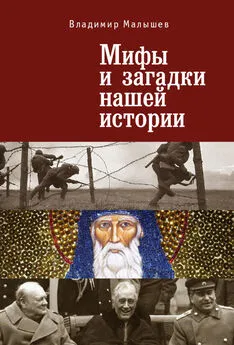
![Дэн Бюттнер - Где живет счастье [Правила жизни самых счастливых людей планеты] [litres]](/books/1065925/den-byuttner-gde-zhivet-schaste-pravila-zhizni-samyh.webp)
![Келси Миллер - Друзья. Больше, чем просто сериал [История создания самого популярного ситкома в истории] [litres]](/books/1073323/kelsi-miller-druzya-bolshe-chem-prosto-serial-is.webp)
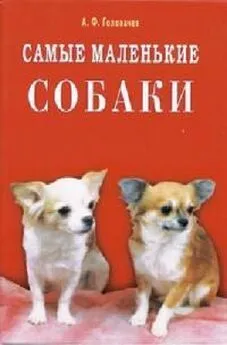
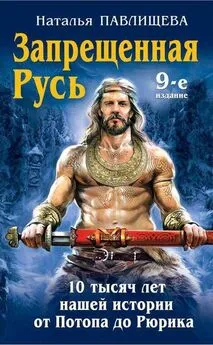
![Медина Мирай - Зазеркалье Нашей Реальности [litres]](/books/1143348/medina-miraj-zazerkale-nashej-realnosti-litres.webp)
